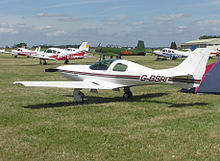
The Piper PA-28 Cherokee is a family of two-seat or four-seat light aircraft built by Piper Aircraft and designed for flight training, air taxi and personal use. The PA-28 family of aircraft comprises all-metal, unpressurized, single piston-engined airplanes with low-mounted wings and tricycle landing gear. They have a single door on the right side, which is entered by stepping on the wing.

The Cessna 172 Skyhawk is an American four-seat, single-engine, high wing, fixed-wing aircraft made by the Cessna Aircraft Company. First flown in 1955, more 172s have been built than any other aircraft. It was developed from the 1948 Cessna 170 but with tricycle landing gear rather than conventional landing gear. The Skyhawk name was originally used for a trim package, but was later applied to all standard-production 172 aircraft, while some upgraded versions were marketed as the Cutlass.

Homebuilt aircraft, also known as amateur-built aircraft or kit planes, are constructed by persons for whom this is not a professional activity. These aircraft may be constructed from "scratch", from plans, or from assembly kits.
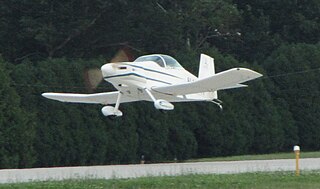
The Thorp T-18 is an American, two-place, all-metal, plans-built, homebuilt aircraft designed in 1963 by John Thorp.

The Beechcraft Musketeer is a family of single-engined, low-wing, light aircraft that was produced by Beechcraft. The line includes the Model 19 Musketeer Sport, the Model 23 Musketeer, Custom and Sundowner, the Model 23-24 Musketeer Super III the retractable gear Model 24-R Sierra and the military CT-134 Musketeer.

The Cessna 400, marketed as the Cessna TTx, is a single-engine, fixed-gear, low-wing general aviation aircraft built from composite materials by Cessna Aircraft. The Cessna 400 was originally built by Columbia Aircraft as the Columbia 400 until December 2007. From 2013, the aircraft was built as the Cessna TTx Model T240.

The Columbia Aircraft Manufacturing Corporation was an aircraft manufacturer that designed and built light general aviation aircraft. In November 2007 it became a division of Cessna.

The Lancair IV and IV-P are a family of four-seat, low-wing, retractable-gear, composite monoplanes powered by a 550 cubic inch Continental TSIO-550 twin-turbocharged piston engine.
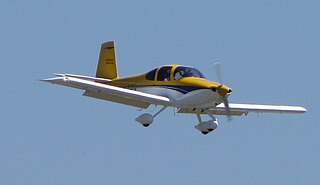
The Van's Aircraft RV-10 is a four-seat, single-engine, low-wing homebuilt airplane sold in kit form by Van's Aircraft. It is the first four-seat airplane in the popular RV series. The RV-10 first flew on 29 May 2003, and the first kit parts were delivered to a customer in September 2003.

The Diamond DA40 Diamond Star is an Austrian four-seat, single-engine, light aircraft constructed from composite materials. Built in both Austria and Canada, it was developed as a four-seat version of the earlier DA20 by Diamond Aircraft Industries.

The Lancair ES is an American amateur-built aircraft that was designed and produced by Lancair. While it was in production the aircraft was supplied as a kit for amateur construction.

The Lancair Legacy, a modernized version of the Lancair 320, is a low-wing two-place retractable-gear composite monoplane, manufactured by the American company Lancair. It is available as a kit that cost US$71,500 in 2011. There is also a fixed-gear version, the Legacy FG. The retractable version of the Legacy cruises at 276 mph at 8,000 ft and the fixed gear version cruises at 215 mph.
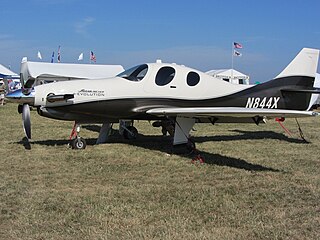
The Lancair Evolution is an American pressurized, low wing, four-place, single engine light aircraft, made from carbon fiber composite, developed by Lancair and supplied as an amateur-built kit by Evolution Aircraft.

The Lycoming IO-390 engine is a horizontally opposed, four-cylinder aircraft engine, manufactured by Lycoming Engines.
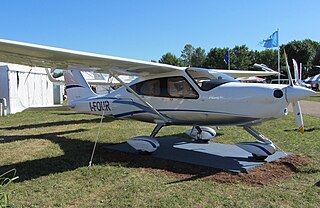
The Tecnam 2010 is a four-seat, high wing, single engine light aircraft of mixed metal and carbon-fiber-reinforced polymer construction. Designed and built in Italy, it was first presented in public in April 2011.

The Pipistrel Panthera is a lightweight, all-composite, highly efficient four-seat aircraft under development by Pipistrel of Slovenia.
The Glassic SQ2000 is an American homebuilt aircraft, designed and produced by Glassic Composites LLC of Sale Creek, Tennessee. When it was available the aircraft was supplied as a kit for amateur construction.
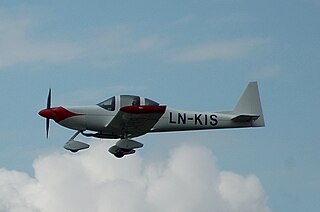
The Tri-R KIS TR-1 is an American homebuilt aircraft that was designed by Rich Trickel and produced by Tri-R Technologies of Oxnard, California, introduced in the 1990s. When it was available the aircraft was supplied as a kit for amateur construction.
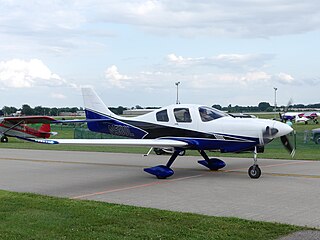
The Lancair Mako is an American amateur-built aircraft designed and produced by Lancair of Uvalde, Texas, introduced at AirVenture in 2017. The aircraft was first flown on 18 July 2017 and is supplied as a kit for amateur construction. It is named after the shark.

The Lancair 200 and Lancair 235 are a family of American amateur-built aircraft that were designed by Lance Neibauer and produced by his company, Lancair of Redmond, Oregon. The Lancair 200 was initially called the Lancer 200, but the name was changed due to a naming conflict. It was first shown at AirVenture in Oshkosh, Wisconsin in July 1985. Now out of production, when it was available the aircraft was supplied as a kit, for amateur construction.

